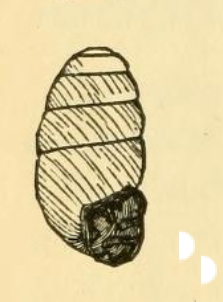Vertigo clementina facts for kids
Quick facts for kids Vertigo clementina |
|
|---|---|
 |
|
| Original drawing of a shell | |
| Conservation status | |
| Scientific classification | |
| Synonyms | |
|
The insular birddrop or San Clemente Island blunt-top snail is a tiny, air-breathing land snail. Its scientific name is Vertigo clementina. This snail is a type of gastropod mollusk and belongs to the family Vertiginidae.
What Does the Snail Look Like?
The shell of the Vertigo clementina is very small. It is shaped like a cylinder and has a narrow hole. The shell is a pale horn color and you can see through it a little. The top of the shell, called the apex, is somewhat rounded.
This snail's shell has about 5½ whorls. These are the spiral turns of the shell. Each whorl gets a bit bigger as it goes down. There are deep lines, called sutures, between the whorls.
The shell feels smooth and looks a bit shiny. If you look very closely, you might see tiny lines on it. The largest part of the shell, called the body whorl, makes up more than two-fifths of the shell's total length.
The opening of the shell is called the aperture. It is on the side and is shaped like an oval. The edge of this opening, called the peristome, is slightly spread out. It has a slightly thicker outer lip right at the edge.
Inside the shell's opening, there are six small, white structures called lamellae. These are like tiny teeth or folds. Two of them are on the inner wall of the opening. The others are placed around the opening in specific ways.
Where Does This Snail Live?
The insular birddrop snail lives only in the State of California, U.S.A. This means it is endemic to California. You won't find it naturally anywhere else in the world.
Scientists keep an eye on this species. Its survival is considered "near threatened." This means that while it's not in immediate danger of disappearing, its population is decreasing. It might become endangered if we don't protect its home.


